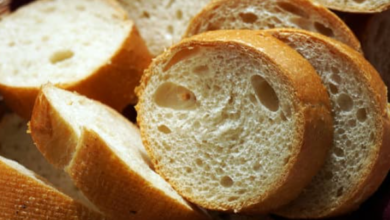How to Make Baguettes Soft – Everything You Need to Know

What To Know
- Fermentation is a crucial step that allows the yeast to convert the sugars in the flour into carbon dioxide gas, which causes the dough to rise.
- This could be due to baking at too high a temperature or not rotating the baguettes in the oven during baking.
- Remember, the perfect baguette is a journey, not a destination, and the joy of bread making is in the process itself.
Baguettes, with their golden-brown crust and soft, chewy interior, are a staple of French cuisine and a beloved bread worldwide. However, achieving the perfect baguette can be a daunting task, especially for home bakers. This comprehensive guide will provide you with step-by-step instructions, essential tips, and troubleshooting advice to help you create soft and fluffy baguettes that will impress your family and friends.
Understanding the Science Behind Baguette Softness
The key to making a soft baguette lies in understanding the science behind the bread-making process. Gluten, a protein found in wheat flour, is responsible for the structure and elasticity of bread. When mixed with water, gluten forms a network of proteins that trap gas bubbles produced by yeast fermentation. This network gives bread its characteristic texture and volume.
Choosing the Right Ingredients
The quality of your ingredients plays a crucial role in the success of your baguette. Always use high-quality bread flour, which has a higher protein content than all-purpose flour, resulting in a stronger gluten network and a better rise. Active dry yeast is the most common type of yeast used in bread making. Make sure it is fresh and active before using it.
Proper Mixing and Kneading
Mixing and kneading are essential steps in the bread-making process. Mix the ingredients until they form a shaggy dough, then knead it on a lightly floured surface for about 10 minutes, or until the dough becomes smooth and elastic. Proper kneading helps develop the gluten network and gives the baguette its signature chewy texture.
Achieving Optimal Fermentation
Fermentation is a crucial step that allows the yeast to convert the sugars in the flour into carbon dioxide gas, which causes the dough to rise. The ideal fermentation temperature for baguettes is between 75°F and 80°F. Allow the dough to rise until it has doubled in size, which usually takes about 1-2 hours.
Shaping the Baguettes
Once the dough has risen, divide it into equal portions and shape them into baguettes. To achieve the classic baguette shape, roll out the dough into a long, thin rectangle, then fold it in thirds, lengthwise. Pinch the seams together to seal the dough.
Scoring the Baguettes
Scoring the baguettes before baking is an essential step that allows the bread to expand properly during baking. Use a sharp knife or razor blade to make shallow diagonal cuts across the top of the baguettes. This will help the bread rise evenly and create a crispy crust.
Baking the Baguettes
Preheat your oven to the highest temperature possible, usually around 450°F. Place the baguettes on a baking sheet and bake them for about 20-25 minutes, or until they are golden brown and sound hollow when tapped.
Cooling the Baguettes
Once the baguettes are baked, remove them from the oven and let them cool on a wire rack for at least 30 minutes before slicing and serving. This will help prevent the bread from becoming gummy.
Troubleshooting Common Baguette Problems
1. Dense and Hard Baguettes: This could be due to over-kneading, not allowing the dough to rise properly, or baking at too low a temperature.
2. Flat Baguettes: This could be caused by not kneading the dough enough, not allowing it to rise properly, or baking at too low a temperature.
3. Burnt Baguettes: This could be due to baking at too high a temperature or not rotating the baguettes in the oven during baking.
Final Note: Achieving Baguette Excellence
With patience, practice, and attention to detail, you can master the art of making soft and fluffy baguettes at home. Experiment with different flours, fermentation times, and baking techniques to find what works best for you. Remember, the perfect baguette is a journey, not a destination, and the joy of bread making is in the process itself.
Frequently Asked Questions (FAQs)
Q: Why is my baguette so dense and hard?
A: This could be due to over-kneading, not allowing the dough to rise properly, or baking at too low a temperature.
Q: Why is my baguette so flat?
A: This could be caused by not kneading the dough enough, not allowing it to rise properly, or baking at too low a temperature.
Q: Why is my baguette burnt?
A: This could be due to baking at too high a temperature or not rotating the baguettes in the oven during baking.





